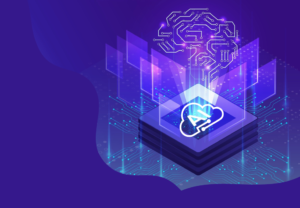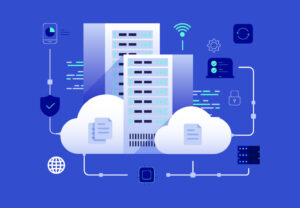Architecting Resilient Multi-Cloud Frameworks for Zero Downtime
“Architecting resilient multi-cloud frameworks for zero downtime operations necessitates comprehensive strategies for implementing active-active architectures and achieving automated failover. Critical considerations include ensuring cross-cloud data consistency, realizing multi-cloud disaster recovery with zero RPO/RTO objectives, and designing cost-effective resilient systems. The discussion includes network latency optimization techniques, effective Kubernetes multi-cluster high availability patterns, and proven approaches for zero downtime database migration across diverse Cloud environments.”
In today’s digital-first economy, service availability has evolved from a competitive advantage to a fundamental business requirement. Organizations across industries increasingly rely on continuous digital operations to deliver value, with even minutes of downtime translating to significant financial losses, damaged reputation, and eroded customer trust. For enterprises operating mission-critical workloads, the imperative for zero downtime operations has never been more pronounced.
The complexity of modern IT environments, characterized by distributed systems, microservices architectures, and hybrid infrastructure models, introduces numerous potential points of failure. Traditional resilience approaches centered on single-cloud environments often fall short when faced with large-scale provider outages, regional disasters, or complex service interdependencies. This challenge has catalyzed the adoption of multi-cloud strategies as a cornerstone of enterprise resilience planning.
Multi-cloud architectures distribute workloads across multiple providers, effectively mitigating the risk of vendor-specific outages while enabling organizations to leverage the unique strengths of different platforms. However, architecting truly resilient multi-cloud frameworks that deliver on the promise of zero downtime requires sophisticated design principles, robust technical implementations, and operational excellence.
Understanding Resilience in Cloud Environments
- 1. Beyond Basic Uptime: A Holistic View of Resilience
Resilience in cloud computing extends beyond simple uptime metrics to encompass a system’s ability to absorb disruptions, recover from failures, and adapt to changing conditions while maintaining essential business functions. This multifaceted approach to resilience addresses not only infrastructure availability but also data integrity, transaction consistency, and service performance during adverse events.
A truly resilient system demonstrates:
- Robustness: The ability to withstand stresses, shocks, and failures without significant degradation in performance or functionality.
- Redundancy: The incorporation of backup components and systems that can take over when primary resources fail.
- Resourcefulness: The capacity to identify problems, establish priorities, and mobilize resources when disruptions occur.
- Rapidity: The ability to restore functionality in a timely manner, minimizing service disruption.
- 2. Key Principles of Resilient Design
- Designing for Failure
The foundation of resilient architecture is the acceptance that failures will occur. Rather than striving for perfect reliability of individual components, resilient systems anticipate and accommodate failures through careful design.
This principle manifests in practices such as:
- Implementing circuit breakers that prevent cascading failures when services become unresponsive.
- Employing bulkheads to isolate failures and contain their impact.
- Designing graceful degradation capabilities that maintain core functionality during partial system failures.
- Implementing retry mechanisms with exponential backoff to handle transient failures.
- Implementing Redundancy and Failover Mechanisms
Redundancy forms the cornerstone of resilience by eliminating single points of failure. In multi-cloud environments, this principle extends beyond traditional approaches to encompass:
- Cross-cloud resource replication.
- Geographically distributed data centers.
- Multiple network paths between critical components.
- Automated failover mechanisms that detect failures and redirect traffic to functional resources.
- Automated Recovery Processes
Human intervention during failure scenarios introduces delays and potential for error. Automated recovery processes enable systems to self-heal, reducing mean time to recovery (MTTR) through:
- Health-checking mechanisms that continuously monitor system components.
- Self-healing infrastructure that automatically replaces failed instances.
- Automated rollbacks for failed deployments.
- Orchestrated recovery workflows that restore system state across multiple clouds.
- Continuous Testing of Resilience Capabilities
Untested resilience mechanisms may fail when needed most. Continuous testing validates recovery capabilities and identifies weaknesses through approaches such as:
- Chaos engineering experiments that intentionally inject failures.
- Regular disaster recovery testing and simulation.
- Load testing under extreme conditions.
- Continuous verification of failover mechanisms.
- The Shared Responsibility Model for Resilience
Cloud resilience operates under a shared responsibility model, with cloud providers and customers each owning specific aspects of the resilience equation. Understanding these boundaries is critical for effective multi-cloud resilience planning:
- a) Provider Responsibilities: Physical infrastructure, host operating systems, virtualization layer, and service-level agreements (SLAs) for individual services.
- b) Customer Responsibilities: Application architecture, data backup and replication, disaster recovery planning, and cross-cloud redundancy.
In multi-cloud environments, this model becomes more complex, requiring organizations to harmonize different provider models into a cohesive resilience strategy that accounts for varying capabilities, service definitions, and operational interfaces.
Architectural Frameworks for Reliability
1) Established architectural frameworks from major cloud providers offer valuable guidance for building reliable systems. These frameworks, while provider-specific, contain transferable principles that inform effective multi-cloud resilience strategies.
- 1) AWS Well-Architected Reliability Pillar
The AWS Well-Architected Framework’s Reliability Pillar emphasizes five key areas:
- a) Foundations: Establishing service quotas and network topology that accommodate workload requirements and growth. In multi-cloud contexts, this extends to understanding cross-provider connectivity and ensuring consistent capacity planning.
- b) Workload Architecture: Designing service architectures that mitigate failures through distributed systems patterns and isolation boundaries. For multi-cloud implementations, this includes consistent application design patterns that function effectively across different provider environments.
- c) Change Management: Implementing controlled deployment practices to minimize risk during updates. In multi-cloud scenarios, this requires coordinated change management across heterogeneous environments with different deployment mechanisms.
- d) Failure Management: Detecting failures, responding automatically, and preventing recurrence. Multi-cloud failure management demands unified monitoring and consistent recovery procedures that account for provider-specific failure modes.
- e) Disaster Recovery Planning: Establishing resilience through backup, replication, and rapid recovery capabilities. Multi-cloud disaster recovery leverages geographic and provider diversity to enhance resilience beyond single-provider capabilities.
- 2) Microsoft Azure Well-Architected Reliability Pillar
Azure’s reliability framework centers on four design principles:
- a) Design for Business Requirements: Defining reliability targets based on business needs and cost constraints. For multi-cloud architectures, this includes balancing investment across providers based on criticality of workloads.
- b) Design for Failure: Implementing redundancy, auto-scaling, and self-healing mechanisms. In multi-cloud environments, this principle extends to cross-provider redundancy and consistent self-healing approaches.
- c) Observe Application Health: Implementing comprehensive monitoring and diagnostics. Multi-cloud observability requires unified monitoring platforms that provide consistent visibility across heterogeneous environments.
- d) Drive Operational Excellence: Establishing standard procedures for deployment, incident response, and disaster recovery. Multi-cloud operations demand standardized processes that accommodate provider-specific tools and interfaces.
Azure’s framework particularly emphasizes availability zones and regions as building blocks for resilience, concepts that translate to multi-cloud architectures through cross-provider distribution strategies.
- 3) Google Cloud Architecture Framework – Reliability Pillar
Google Cloud’s reliability framework focuses on:
- a) Design for Scale: Building horizontally scalable systems that accommodate growth without disruption. Multi-cloud implementations leverage this principle through distributed load balancing and consistent scaling policies across providers.
- b) Design for Changes: Creating systems that adapt to evolving requirements and conditions. In multi-cloud environments, this includes platform-agnostic design approaches that facilitate workload mobility.
- c) Design for Failures: Implementing redundancy, fault isolation, and graceful degradation. Multi-cloud resilience extends this concept through cross-provider redundancy strategies that mitigate single provider failures.
- d) Disaster Planning: Establishing recovery objectives and implementing appropriate strategies. Multi-cloud disaster recovery leverages provider diversity to enhance recovery capabilities beyond single provider limitations.
Google’s framework emphasizes the importance of load balancing, health checking, and canary deployments, practices that form essential components of multi-cloud zero downtime operations.
Strategies for Multi-Cloud Resilience
- 1) The Rationale for Multi-Cloud for Zero Downtime
The strategic value of multi-cloud architectures for zero downtime operations derives from several key benefits:
- Avoiding Single Points of Failure Tied to a Specific Cloud Provider
Even the most reliable cloud providers experience outages. By distributing workloads across multiple providers, organizations can maintain operations during provider-specific incidents that might otherwise cause complete service disruption. This cross-provider redundancy eliminates the dependency on any single provider’s infrastructure, services, or regions.
A multi-cloud active architecture implementation guide typically recommends distributing critical application components across strategic provider combinations based on:
- a) Historical reliability patterns of specific services.
- b) Geographic diversity of provider data centers.
- c) Service maturity and feature parity across providers.
- d) Provider-specific strengths for particular workload
- Distributing Risk Across Different Infrastructures
Different cloud providers implement their underlying infrastructure using varied technologies, architectures, and operational practices. This diversity creates natural isolation between providers, reducing the likelihood of common-mode failures affecting multiple environments simultaneously. Organizations can leverage this diversity through:
- a) Distributing stateful services across multiple clouds based on provider reliability characteristics.
- b) Implementing zero downtime multi-cloud failover automation to redirect traffic during disruptions.
- c) Balancing workloads across providers with complementary strengths.
- d) Isolating critical system components across different provider environments.
- Geographic Distribution for Disaster Recovery
Major cloud providers offer data centers in overlapping but distinct geographic regions. Multi-cloud architectures capitalize on this coverage to enhance disaster recovery capabilities through:
- a) Cross-region and cross-provider data replication.
- b) Geo-distributed application deployments with automated failover.
- c) Multi-cloud disaster recovery with RPO/RTO near zero through continuous synchronization.
- d) Regional traffic routing based on provider health and performance.
- 2) Key Architectural Patterns for Multi-Cloud Resilience
- Active-Passive, Active-Active Deployments Across Clouds
The foundation of multi-cloud resilience lies in effective workload distribution patterns:
Active-Passive Configuration: Maintains primary workloads in one cloud while keeping synchronized standby environments in another. This approach:
- a) Requires zero downtime multi-cloud failover automation to detect primary environment failures and redirect operations to the standby environment.
- b) Minimizes ongoing operational costs while providing recovery capabilities.
- c) Simplifies operations by designating a clear primary environment.
- d) Typically achieves recovery time objectives (RTOs) of minutes rather than seconds.
Active-Active Configuration: Distributes live workloads across multiple cloud providers simultaneously. This more sophisticated approach:
- Eliminates failover delays by maintaining continuous operations in all environments.
- Requires complex cross-cloud data consistency strategies to maintain state synchronization.
- Enables geographic load distribution and latency optimization.
- Provides immediate resilience against provider outages without recovery delays.
- Data Replication and Synchronization Strategies
Maintaining data consistency across multiple clouds represents one of the most significant challenges in multi-cloud architectures. Effective cross-cloud data consistency strategies include:
Synchronous Replication: Ensures transactions are committed across all environments before confirming completion. While providing the strongest consistency guarantees, this approach:
- a) Introduces latency as transactions must be completed in all locations.
- b) Creates tight coupling between environments.
- c) Requires high-bandwidth, low-latency connectivity between clouds.
- d) Works best for critical data with zero tolerance for loss.
Asynchronous Replication: Commits transactions in the primary environment first, then propagates changes to secondary locations. This approach:
- a) Minimizes performance impact on primary operations.
- b) Tolerates network disruptions between environments.
- c) Creates potential for data loss during failover (non-zero RPO).
- d) Requires reconciliation mechanisms to resolve conflicts.
Event-Driven Replication: Uses event streams and message queues to propagate changes across environments. This pattern:
- a) Decouples systems while maintaining eventual consistency.
- b) Enables resilient operations during connectivity disruptions.
- c) Facilitates complex transformation and routing between heterogeneous environments.
- d) Supports sophisticated retry and recovery mechanisms.
- Managing Network Connectivity and Latency in Multi-Cloud
Network architecture forms a critical component of multi-cloud resilience. Key considerations include:
Dedicated Interconnection: Direct connectivity between cloud providers through services like AWS Direct Connect, Azure ExpressRoute, and Google Cloud Interconnect. These connections:
- a) Provide consistent, low-latency data transfer between clouds.
- b) Bypass the public internet for enhanced security and reliability.
- c) Support multi-cloud network latency optimization techniques through prioritization and quality of service.
- d) Enable synchronous replication patterns that would be impractical over public networks.
Software-Defined Networking: Implementation of consistent networking policies and configurations across heterogeneous environments. SDN approaches:
- a) Abstract provider-specific network implementations behind consistent interfaces.
- b) Enable automated network reconfiguration during failover events.
- c) Facilitate uniform security policies across environments.
- d) Support dynamic routing adjustments based on provider health and performance.
Global Traffic Management: Intelligent routing of user requests to the most appropriate cloud environment. These systems:
- a) Direct traffic based on provider health, geographic proximity, and current load.
- b) Implement seamless failover during outages.
- c) Optimize user experience through latency-based routing.
- d) Support gradual traffic shifting during planned migrations.
- 3) Challenges in Multi-Cloud Resilience
- Complexity of Management and Operations
Multi-cloud environments introduce significant operational challenges, including:
- a) Management of multiple control planes and administrative interfaces.
- b) Integration of disparate monitoring, logging, and alerting systems.
- c) Coordination of security policies and compliance controls across environments.
- d) Maintenance of consistent infrastructure-as-code templates for heterogeneous platforms.
Effective multi-cloud operations require investing in unified management tools, standardized processes, and cross-platform expertise.
- Consistency of Services and Configurations
Cloud providers offer similar services with subtle but significant differences in:
- a) Feature sets and capabilities.
- b) API interfaces and authentication mechanisms.
- c) Configuration parameters and default settings.
- d) Service limits and quotas.
Maintaining consistent application behavior across these variations requires careful abstraction and adaptation layers that normalize provider differences.
- Security Considerations Across Different Platforms
Multi-cloud security introduces challenges in:
- a) Identity and access management across disparate provider systems.
- b) Key management and secret distribution.
- c) Consistent policy enforcement and compliance verification.
- d) Security incident detection and response across environments.
Organizations must implement unified security frameworks that provide consistent protection despite underlying platform differences.
Enabling Technologies for Resilient Multi-Cloud
- 1) Infrastructure as Code (IaC) with Terraform
Infrastructure as Code forms the foundation of reproducible, consistent multi-cloud deployments. Terraform has emerged as the leading cross-provider IaC tool due to its:
- Automating Infrastructure Provisioning and Management Across Clouds
Terraform enables organizations to define infrastructure requirements in declarative configuration files that:
- a) Support multiple cloud providers through a consistent syntax.
- b) Abstract provider-specific details behind standardized resource definitions.
- c) Facilitate zero downtime multi-cloud failover automation through programmatic infrastructure management.
- d) Enable rapid recovery through automated environment reconstruction.
- Ensuring Consistency and Repeatability of Deployments
The declarative approach of Terraform ensures:
- a) Identical environments across development, testing, and production.
- b) Consistent configuration of security controls and compliance requirements.
- c) Reproducible deployments that eliminate configuration drift.
- d) Standardized implementation of resilience patterns across providers.
- Using IaC for Disaster Recovery and Failover Automation
Terraform’s programmatic capabilities enable sophisticated recovery workflows that:
- a) Automatically provision recovery infrastructure during failover events.
- b) Scale resources dynamically based on workload requirements.
- c) Recreate complex environments with precise configuration parameters.
- d) Restore system state through integration with backup and replication tools.
- 2) Kubernetes for Multi-Cluster Management
Kubernetes has become the de facto standard for container orchestration, with federation capabilities extending its resilience across multiple clusters and clouds.
- Managing Workloads Across Multiple Kubernetes Clusters in Different Clouds
Kubernetes multi-cluster high availability patterns provide:
- a) Consistent workload definitions across heterogeneous environments.
- b) Automated scheduling of containers based on cluster health and capacity.
- c) Unified configuration management across provider-specific Kubernetes implementations.
- d) Standardized approaches for service discovery and load balancing.
- Achieving Workload Portability and Failover Capabilities
Multi-cluster Kubernetes deployments enable:
- a) Seamless workload migration between clusters during planned or unplanned events.
- b) Consistent application behavior across different provider environments.
- c) Automated failover of stateless services without manual intervention.
- d) Sophisticated approaches for managing stateful services across multiple clouds.
- Considerations and Alternatives to Traditional Federation
While Kubernetes provides valuable multi-cluster capabilities, organizations should consider:
- a) Alternative approaches like cluster API for multi-cluster management.
- b) Service mesh technologies (Istio, Linkerd) for cross-cluster communication.
- c) Custom controllers for specific multi-cluster use cases.
Application-level replication for stateful services.

Building for Zero Downtime Operations
- 1) Proactive Monitoring and Observability
Effective multi-cloud operations require comprehensive visibility across distributed environments.
- Implementing Comprehensive Monitoring Across the Multi-Cloud Environment
Multi-cloud monitoring should address:
- a) Infrastructure metrics from all provider environments.
- b) Application performance and health indicators.
- c) End-to-end service availability and performance.
- d) Cross-cloud data consistency and replication status.
Modern monitoring approaches leverage:
- a) Distributed tracing to track requests across cloud boundaries.
- b) Custom health checks that verify end-to-end functionality.
- c) Synthetic transactions that simulate user interactions.
- d) Real user monitoring to measure actual experience.
- Utilizing Unified Dashboards and Alerting
Operational efficiency in multi-cloud environments requires:
- a) Consolidated dashboards that provide holistic views across providers.
- b) Consistent alerting thresholds and notification channels.
- c) Correlation of events across distributed systems.
- d) Role-based views tailored to different stakeholder needs.
- Predictive Analytics for Identifying Potential Issues
Advanced observability leverages:
- a) Machine learning for anomaly detection across multi-cloud telemetry.
- b) Trend analysis to identify deteriorating performance before failure.
- c) Capacity forecasting to prevent resource constraints.
- d) Pattern recognition to correlate symptoms with known failure modes.
- 2) Automated Incident Response and Recovery
Zero downtime operations require automated response mechanisms that minimize human intervention during incidents.
- Defining Playbooks and Runbooks for Common Failure Scenarios
Effective incident response in multi-cloud environments requires:
- a) Detailed documentation of failure modes and recovery procedures.
- b) Clear decision trees for different failure scenarios.
- c) Defined escalation paths and responsibilities.
- d) Regular updates based on incident retrospectives.
- Implementing Automated Recovery Workflows
Zero downtime multi-cloud failover automation includes:
- a) Health-checking systems that continuously verify component functionality.
- b) Automated remediation workflows triggered by monitoring alerts.
- c) Self-healing infrastructure that replaces failed resources.
- d) Orchestrated failover processes that coordinate complex recovery operations.
- Continuous Testing of Recovery Procedures
Resilience requires validated recovery capabilities through:
- a) Regular testing of failover mechanisms.
- b) Chaos engineering experiments that inject realistic failures.
- c) Game day exercises that simulate complex disaster scenarios.
- d) Continuous verification of backup and restoration processes.
- 3) Change Management and Deployment Strategies
Changes represent a significant risk to system stability, requiring careful management strategies.
- Implementing Robust Change Management Processes
Safe changes in multi-cloud environments require:
- a) Comprehensive impact assessment across all affected environments.
- b) Phased implementation approaches that limit risk exposure.
- c) Automated validation of changes before implementation.
- d) Clear rollback procedures for failed changes.
- Utilizing Techniques Like Blue/Green Deployments and Canary Releases
Advanced deployment strategies for zero downtime include:
- a) Blue/green deployments that maintain parallel environments.
- b) Canary releases that limit new code exposure to subset of users.
- c) Feature flags that enable rapid feature deactivation.
- d) Traffic shifting techniques that gradually migrate load to new implementations.
- Minimizing Downtime During Updates and Migrations
Zero downtime database migration across multi-cloud environments requires:
- a) Data replication strategies that maintain consistency during transitions.
- b) Incremental migration approaches that minimize cutover windows.
- c) Dual-write patterns that maintain data integrity during transitions.
- d) Sophisticated schema evolution techniques that support rolling upgrades.
- 4) Security as a Foundational Element
Security must be integrated throughout the resilient multi-cloud architecture.
- Integrating Security into the Design of Resilient Multi-Cloud Frameworks
Security-by-design principles for multi-cloud include:
- a) Defense-in-depth strategies that provide multiple protection layers.
- b) Least privilege access controls for all resources.
- c) Automated compliance verification across environments.
- d) Secure-by-default configurations for all services.
- Consistency in Security Policies and Controls Across Environments
Multi-cloud security requires:
- a) Unified policy definitions that translate to provider-specific implementations.
- b) Consistent encryption approaches data at rest and in transit.
- c) Standardized vulnerability management across environments.
- d) Integrated threat detection and response capabilities.
- Managing Identity and Access Management (IAM) in a Multi-Cloud Setup
Effective multi-cloud IAM includes:
- a) Federated identity systems that span provider boundaries.
- b) Consistent role definitions and permission boundaries.
- c) Centralized authentication with distributed authorization.
Operational Excellence in a Multi-Cloud World
- 1) Unified Management and Operations Platforms
Effective multi-cloud operations leverage specialized management platforms that provide:
- a) Consistent control interfaces across providers.
- b) Unified visibility into costs, performance, and compliance.
- c) Standardized automation capabilities for routine tasks.
- d) Comparative analysis of provider-specific metrics.
When comparing multi-cloud management platforms for resilience, organizations should evaluate:
- a) Support for automated failover orchestration.
- b) Capabilities for cross-cloud resource optimization.
- c) Integration with existing monitoring and alerting systems.
- d) Extensibility to accommodate organizational requirements.
- 2) Skills and Expertise Required for Managing Multi-Cloud Environments
Organizations must develop specialized capabilities including:
- a) Expertise in multiple cloud providers’ services and architectures.
- b) Understanding of cross-cloud networking and security.
- c) Proficiency in infrastructure-as-code and automation tools.
- d) Experience with distributed systems design and operation.
Teams responsible for multi-cloud operations should adopt:
- a) Cross-training across provider-specific technologies.
- b) Collaborative problem-solving across traditional silos.
- c) Continuous learning to keep pace with evolving services.
- d) Knowledge sharing to distribute expertise throughout the organization.
- 3) Cost Management Considerations in a Complex Infrastructure
Cost analysis for resilient multi-cloud architecture must account for:
- a) Direct infrastructure costs across multiple providers.
- b) Network transfer fees between environments.
- c) Licensing implications of multi-cloud deployment.
- d) Operational overhead of managing complex environments.
Effective cost optimization strategies include:
- a) Right-sizing resources based on actual utilization.
- b) Reserved capacity purchases for predictable workloads.
- c) Intelligent workload placement based on provider pricing models.
- d) Automated scaling to match resources with demand.
- 4) Building a Culture of Reliability and Continuous Improvement
Organizational culture forms the foundation of resilient operations through:
- a) Blameless postmortem processes that focus on systemic improvement.
- b) Transparent communication about incidents and learnings.
- c) Recognition of proactive reliability improvements.
- d) Investment in tools and training that enhance resilience capabilities.
Continuous improvement practices include:
- a) Regular review of incident patterns and trends.
- b) Systematic implementation of lessons learned.
- c) Ongoing refinement of monitoring and alerting thresholds.
- d) Continuous evolution of recovery procedures based on operational experience.

Conclusion
Architecting resilient multi-cloud frameworks for zero downtime operations represents both a significant technical challenge and a strategic imperative for modern organizations. The approaches, from fundamental design principles to specific implementation patterns, provide a comprehensive roadmap for organizations seeking to enhance their operational resilience through multi-cloud strategies.
The journey toward zero downtime multi-cloud operations requires careful attention to:
- a) Cross-cloud data consistency strategies that maintain state synchronization.
- b) Zero downtime multi-cloud failover automation that enables seamless recovery.
- c) Multi-cloud network latency optimization techniques that enhance performance.
- d) Comprehensive approaches for managing stateful services across multiple clouds.
- e) Cost-effective resilience strategies that balance investment against risk.
These capabilities don’t emerge from technology alone but from the thoughtful integration of architectural patterns, enabling technologies, operational practices, and organizational culture. Organizations that successfully navigate these dimensions achieve not only enhanced resilience but also greater agility, improved performance, and more efficient operations.
Looking ahead, the evolution of multi-cloud resilience will likely adopt:
- a) Increasing automation through AI-driven operations.
- b) Enhanced abstraction layers that simplify multi-cloud complexity.
- c) More sophisticated cross-cloud data consistency mechanisms.
- d) Deeper integration between development and operational resilience practices.
Motherson Technology Services stands at the forefront of these advancements, helping organizations implement robust multi-cloud architectures that deliver genuine zero downtime capabilities. Our expertise in multi-cloud active architecture implementation, zero downtime failover automation, and Kubernetes multi-cluster high availability patterns enables clients to achieve new levels of operational resilience while optimizing costs and performance.
By adopting the principles and practices, organizations can transform their approach to resilience, moving from reactive recovery to proactive resilience engineering, and ultimately delivering the continuous availability that modern business demands.
References
[1] https://docs.aws.amazon.com/wellarchitected/latest/reliability-pillar/reliability.html
[2] https://learn.microsoft.com/en-us/azure/well-architected/what-is-well-architected-framework
[3] https://cloud.google.com/architecture/framework
[4] https://solveforce.com/google-cloud-architecture-framework-google-cloud-architecture-center/
[5] https://www.kubecost.com/kubernetes-multi-cloud/kubernetes-federation/
About the Author:

Dr. Bishan Chauhan
Head – Cloud Services & AI / ML Practice
Motherson Technology Services
With a versatile leadership background spanning over 25 years, Bishan has demonstrated strategic prowess by successfully delivering complex global software development and technology projects to strategic clients. Spearheading Motherson’s entire Cloud Business and global AI/ML initiatives, he leverages his Ph.D. in Computer Science & Engineering specializing in Machine Learning and Artificial Intelligence. Bishan’s extensive experience includes roles at Satyam Computer Services Ltd and HCL prior to his 21+ years of dedicated service to the Motherson Group.

 June 5, 2025
June 5, 2025 Dr. Bishan Chauhan
Dr. Bishan Chauhan















































